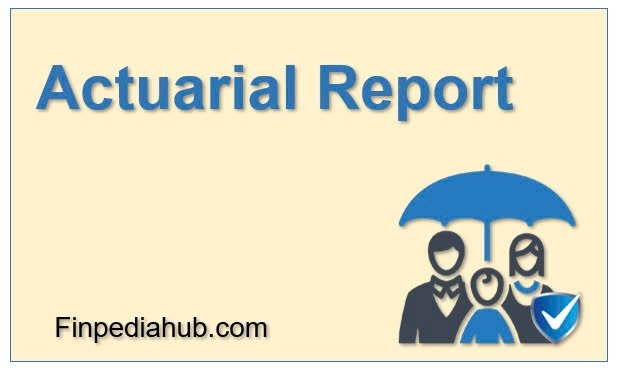An Actuarial Report is a formal document prepared by a professional actuary to present their findings, conclusions, and recommendations about an insurance company’s financial soundness, reserves, and risk exposure.
In simpler terms, it’s a detailed report that helps both the state regulatory authorities and the insurance company’s board of directors understand whether the insurer has enough money set aside to pay future claims. It explains how the actuary analyzed the data, what methods were used, and what conclusions were reached about the company’s overall financial stability.
For property and casualty (P&C) insurance, this document is known as an Actuarial Report, while in life and health insurance, it’s typically referred to as an Actuarial Memorandum.
Understanding the Purpose of an Actuarial Report
An Actuarial Report serves as a bridge between complex mathematical models and real-world business or regulatory decisions. It provides a clear and transparent explanation of how the actuary arrived at certain professional opinions—particularly regarding:
-
Loss reserves (money set aside to pay future claims)
-
Premium adequacy (whether current premiums are sufficient)
-
Financial condition (the company’s ability to meet obligations)
-
Risk assessment and solvency analysis
By documenting all methods, data, and assumptions used in the analysis, the report ensures that decision-makers can trust the accuracy and reasonableness of the actuary’s conclusions.
Key Components of an Actuarial Report
While the format may vary depending on the jurisdiction or company, a standard Actuarial Report usually includes:
-
Executive Summary – A concise overview of the actuary’s conclusions and recommendations.
-
Scope of the Assignment – Details on what areas were analyzed and what data sources were used.
-
Methodology and Assumptions – The models, formulas, and statistical methods used to estimate reserves or liabilities.
-
Results and Findings – The actuary’s evaluation of loss trends, reserve adequacy, and financial risk.
-
Opinion Statement – The actuary’s professional conclusion, confirming whether the insurer’s reserves are sufficient.
-
Supporting Exhibits – Data tables, charts, and calculations that document the analysis behind the conclusions.
This structure ensures that both regulators and company executives understand not just what the actuary concluded, but how they reached those conclusions.
Why Actuarial Reports Are Important
Actuarial Reports play a vital role in the insurance industry for several reasons:
-
Regulatory compliance: Insurers are legally required to provide these reports to regulators to demonstrate financial solvency.
-
Transparency: The report clearly communicates complex actuarial analyses in a documented, traceable format.
-
Decision support: Executives and boards use these insights to make informed decisions about pricing, reserves, and future risk.
-
Accountability: The report holds actuaries responsible for their professional opinions, ensuring credibility and integrity.
Without an accurate Actuarial Report, an insurer could underestimate future claim liabilities—potentially putting policyholders and the company’s financial stability at risk.
Example of How an Actuarial Report Is Used
Imagine a property and casualty insurer wants to evaluate whether it has enough money set aside for claims related to automobile accidents.
The actuary analyzes past claim data, future trends, inflation, and regulatory requirements. They then prepare an Actuarial Report summarizing these findings:
-
How much money should remain in reserves to cover pending and future claims.
-
Whether the company’s pricing structure supports long-term sustainability.
-
Recommendations for adjusting reserve estimates or underwriting practices.
This report is submitted to both the Board of Directors and state regulators to confirm that the company is financially sound and compliant with insurance laws.
Actuarial Report vs. Actuarial Memorandum
While both documents serve similar purposes, they differ by insurance type:
| Term | Used In | Primary Focus |
|---|---|---|
| Actuarial Report | Property & Casualty Insurance | Evaluates loss reserves and financial adequacy for short-term risks. |
| Actuarial Memorandum | Life & Health Insurance | Assesses long-term liabilities, premium sufficiency, and policyholder reserves. |
Essentially, both are professional actuarial communications tailored to different sectors of the insurance industry.
Key Takeaway
An Actuarial Report is a comprehensive document prepared by an actuary to communicate professional findings on an insurer’s reserves, financial condition, and risk exposure. It provides transparency, ensures regulatory compliance, and supports responsible financial management.
By accurately documenting assumptions, methods, and results, the Actuarial Report helps regulators and company leaders make confident, data-driven decisions that protect both the insurer and its policyholders.




